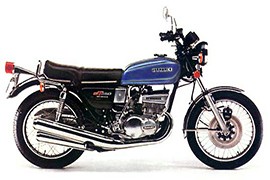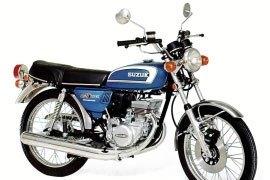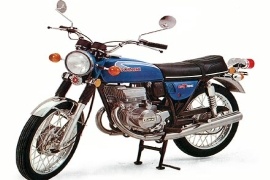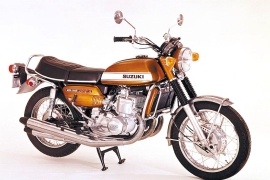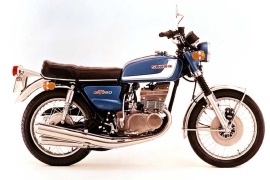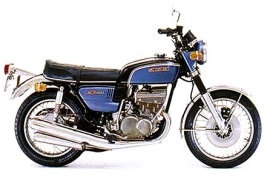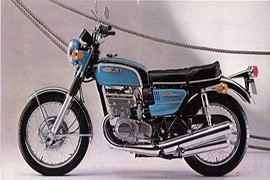SUZUKI GT Models/Series Timeline, Specifications & Photos
First production year: 1970
The new engine is very compactabout 7.2 kg (16 Ibs) lighter than the previous model. It features Suzuki's Power Reed valve dual induction system which increases engine breathing for better response through the rev range.
The GT 550M, known as the Indy in the States, had been around since 1972, gaining a disc front brake, a few horsepower, and a few other improvements along the way. Similar in looks and layout to the GT380 triple, it was notable for employing Suzuki's Ram Air System—which referred to the simple piece of bent metal that helped direct a cooling breeze over the cylinder head. Breathing in through a trio of 28 mm Mikuni carburetors and out through a bulky four-pipe exhaust system, the 543cc motor produced 53 HP at 7500 rpm.
The GT 125 was released by Suzuki in 1974 as the smaller sister of the GT 185. The bike had a shorter wheelbase and smaller engine displacement than the 185 GT and also the electric starter was sacked to make it more affordable. The GT series was regarded as a good beginner class at the time.
Suzuki introduced in 1973 the GT 185. This bike comes equipped with a twin cylinder, Ram Air cooling drum brakes front and rear and a combination electric starter/generator setup. In some markets the GT185 became the RG 185 and was sold with different trim.
The new motorcycle introduced by Suzuki in 1972 was GT 750. This bike is heavy, conmfortable, economical and extremely smooth, the GT 750 is capable of high 13/seconds standing start quarter miles.
The 1972 Suzuki GT 380 showed much promise, on paper at least. If the other Japanese manufacturers had stood still during the 70`s then the GT 380 would have made perfect sense. The GT 380 saw some minor improvements every year of its production; this was never enough to bring it to the forefront of the capacity class.
The 1972 Suzuki GT 550 was the big version of Suzuki’s GT range of touring and commuting two-stroke triples. Unlikely to get you in trouble and most certain to get you home, Suzuki’s GT were the thinking person’s two strokes. Bore and stroke were an almost square 61mm x 62mm, giving a capacity of 544 cc. Compression ratio was 6.8:1 and claimed hp was 50 at 6,500 rpm. The five-speed transmission was operated via a multi-disc six-spring clutch.
MY Suzuki GT 550J wasn't as fast as its big brother but it was a perfect compromise between the GT 380 and GT 750. The low-mounted exhaust pipes decreased the ground clearance significantly in the curves and the the suspension was quite soft but othervise the GT 550J was smooth, fast and durable. The Suzuki engineers had done a fine job with it.

